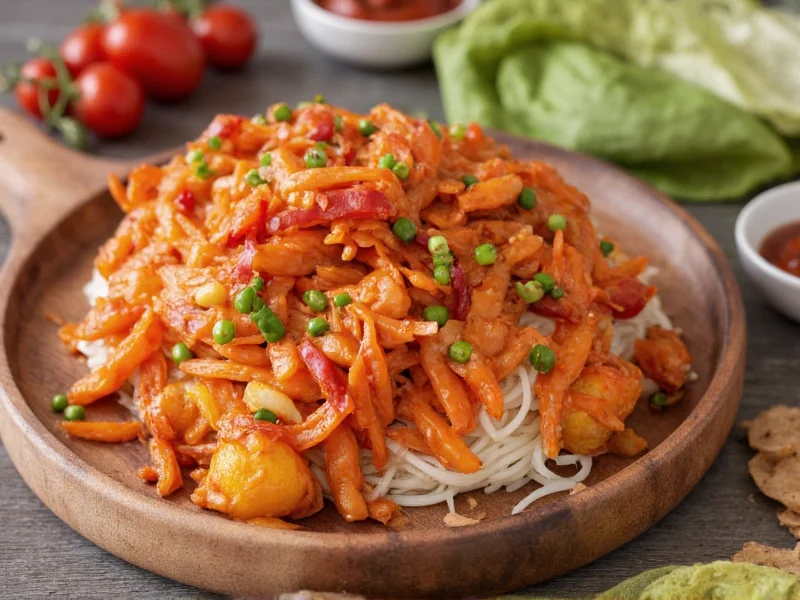When searching for what is taziki, most people are actually looking for information about tzatziki, the beloved Mediterranean sauce. This common misspelling occurs frequently in online searches, but understanding the authentic preparation and cultural significance of this sauce provides valuable culinary insight.
Understanding Tzatziki: More Than Just a Sauce
Tzatziki represents one of the most recognizable elements of Greek culinary tradition. Far from being merely a condiment, it embodies centuries of Mediterranean food culture. The sauce's cooling properties make it the perfect complement to grilled meats and spicy dishes, balancing flavors while enhancing the overall dining experience.
Etymology and Linguistic Origins
The word "tzatziki" derives from the Turkish "cacık," which itself comes from the Persian word "jajīk." This linguistic journey reflects the sauce's spread across regions through historical trade routes and cultural exchanges. The 'tz' beginning represents the Greek pronunciation that English speakers often simplify to 't,' leading to the common misspelling 'taziki.'
Traditional Ingredients and Preparation
Authentic tzatziki requires specific ingredients prepared with care. The quality of each component significantly impacts the final product. Unlike many commercial versions, traditional preparation involves several crucial steps that develop the sauce's distinctive flavor profile.
| Core Ingredient | Traditional Amount | Purpose |
|---|---|---|
| Full-fat Greek yogurt | 2 cups | Provides creamy base and tangy flavor |
| English cucumber | 1 medium, peeled and grated | Adds freshness and texture |
| Garlic | 2-3 cloves, minced | Delivers signature pungent flavor |
| Fresh dill | 2 tablespoons, chopped | Contributes herbal notes |
| Lemon juice | 1 tablespoon | Enhances brightness and preserves color |
| Extra virgin olive oil | 2 tablespoons | Creates smooth texture and rich mouthfeel |
The Essential Preparation Process
Creating authentic tzatziki requires more than simply mixing ingredients. The cucumber must be thoroughly drained to prevent a watery consistency. Many traditional recipes call for salting the grated cucumber and allowing it to sit for 20-30 minutes before squeezing out excess moisture. The garlic should be minced finely or crushed to fully release its oils, then allowed to mellow in the yogurt for at least two hours before serving.
One critical aspect often overlooked in what is taziki sauce inquiries is the importance of using full-fat yogurt. Low-fat or non-dairy alternatives fundamentally change the texture and flavor profile, resulting in a product that lacks authenticity. The fat content in traditional Greek yogurt creates the luxurious mouthfeel that defines proper tzatziki.
Regional Variations Across Mediterranean Cuisine
While tzatziki is most closely associated with Greek cuisine, similar preparations exist throughout the Mediterranean and Middle East. In Turkey, cacık often includes more garlic and sometimes mint. Lebanese versions might incorporate additional herbs like parsley. Bulgarian tarator typically includes walnuts. These regional adaptations demonstrate how culinary traditions evolve while maintaining core elements.
Nutritional Profile and Health Benefits
Tzatziki offers several nutritional advantages when prepared traditionally. The yogurt provides probiotics and protein, while cucumber contributes hydration and vitamins. Garlic delivers allicin, known for its potential health benefits. When made with quality ingredients, tzatziki serves as a nutritious alternative to many commercial condiments high in sugar and preservatives.
Distinguishing Tzatziki from Similar Sauces
Many people searching for what is taziki confuse it with other Mediterranean sauces. Tzatziki differs significantly from tahini (sesame paste-based) and raita (an Indian yogurt condiment that often includes fruit). While raita shares the yogurt base, it typically features different spices and sweet elements uncommon in traditional tzatziki.
Practical Uses in Modern Cooking
Beyond its traditional applications, tzatziki has found versatile uses in contemporary cuisine. Chefs incorporate it as a sandwich spread, vegetable dip, or even as a base for salad dressings. Its cooling properties make it an excellent accompaniment to spicy foods, while its tangy flavor enhances grilled vegetables and fish. Understanding these applications helps answer the practical aspects of what does tzatziki taste like and how to use it effectively.
Creating Authentic Tzatziki at Home
For those wondering how to make authentic tzatziki, the process remains straightforward with attention to detail. Begin by preparing the cucumber properly—salting and draining is non-negotiable for the right texture. Combine the yogurt with minced garlic and let it rest before adding other ingredients. This allows the garlic flavor to mellow and integrate. Stir in the cucumber, herbs, lemon juice, and olive oil just before serving for the freshest flavor.
Patience proves essential in tzatziki preparation. Allowing the finished sauce to chill for several hours before serving lets the flavors meld beautifully. Many culinary experts recommend preparing tzatziki the day before consumption for optimal taste development.
Common Misconceptions About Tzatziki
Several misconceptions surround tzatziki, particularly regarding the common misspelling 'taziki.' Some believe it's originally a Middle Eastern creation rather than Greek, though historical evidence points to Greek origins with regional adaptations. Others mistakenly think tzatziki must contain vinegar, when traditional recipes rely solely on the natural tang of yogurt and lemon juice.











 浙公网安备
33010002000092号
浙公网安备
33010002000092号 浙B2-20120091-4
浙B2-20120091-4